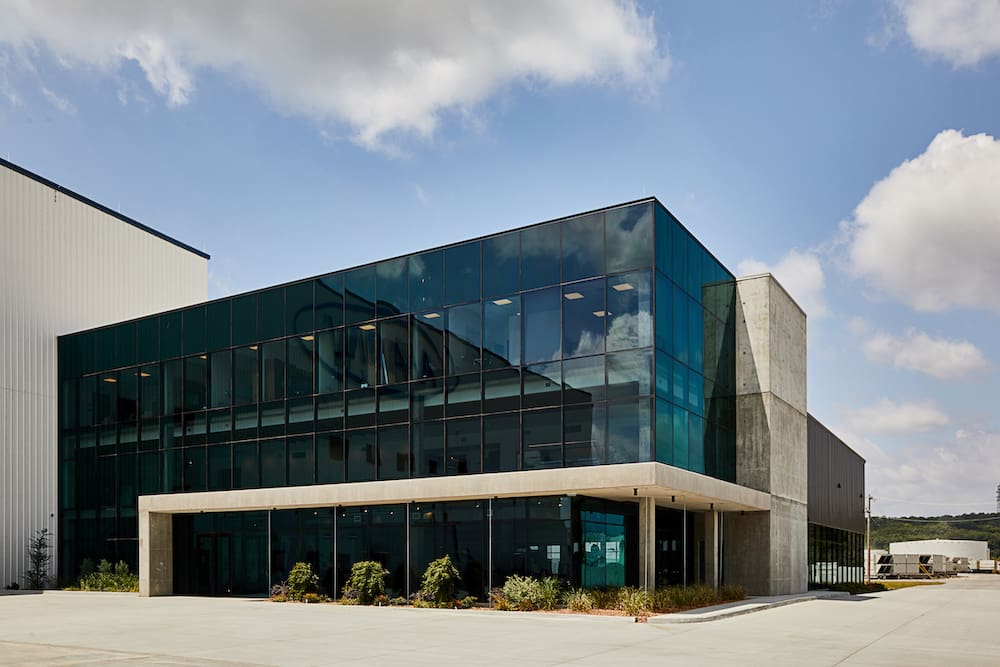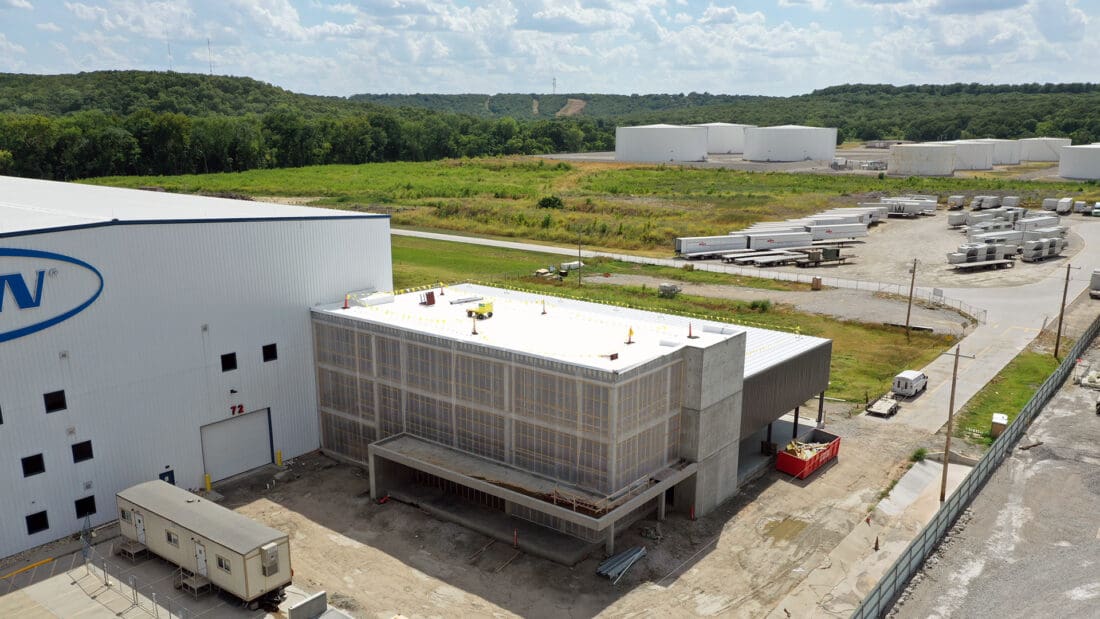Benefits of Net Zero Construction
How going green can help the environment—and the bottom line.
In the effort to reduce global carbon emissions, net zero construction has emerged as a worthy goal for builders, especially those in the industrial/commercial sphere.
What this usually means is that a building’s net carbon emissions during both construction and operation phases are zero or negative. This is typically achieved through a combination of emission-reducing measures and carbon offsets, which are tradable certificates that companies can purchase to achieve their carbon-neutral goals.
The term net zero has also been used to refer to the energy consumption of a building or other entity, meaning that the entity produces its own energy onsite equivalent to the energy it consumes from utility scale sources. This dual definition has created some ambiguity in the use of the term. For clarity, net zero carbon is the term used to distinguish it from net zero energy.

For today’s construction industry, net zero carbon is the most immediately sought-after goal. And minimizing the use of carbon-based fuels is the most direct way to approach it.
The federal government has set an ambitious goal of reducing carbon emissions by 50 percent by 2032. President Biden’s “Federal Sustainability Plan” targets new construction as well as existing structures to reduce energy consumption and emissions through a variety of measures. This trend encouraging net-zero construction is evident throughout state, local, and federal government entities.

Net Zero Construction in Practice
Reducing net emissions can begin in the construction phase. Using electric or hybrid vehicles to transport supplies and equipment is a good first step. Energy can also be saved—and emissions reduced—by obtaining those items from suppliers nearby rather than far away. Today’s lean construction practices seek to minimize waste and maximize efficiency—which can also reduce CO2 emissions. Using the most energy efficient equipment and materials, especially insulation, lighting, roofing, and HVAC systems, is an obvious way to minimize energy use and, thus, emissions.
Once a building is operational, there are numerous ways to cut down on carbon energy usage. One of the best solutions is to produce renewable energy onsite. Solar panels, wind turbines, and geothermal heating and cooling systems can contribute to this goal.
Another very effective, if less quantifiable way to reduce net carbon emissions is to employ lots of green plants in landscaping and interior design. Plants consume CO2, making them an ideal vehicle for carbon sequestration. They also emit oxygen, which humans need to live. Studies have suggested that the presence of green plants can help reduce stress, sharpen attention, boost productivity, and even speed recovery from illness.
Now, About Those Benefits …
Builders and owners who seek net-zero emissions can feel gratified in conserving energy and helping to mitigate one cause of global warming.
Project Drawdown, an organization dedicated to providing solutions for climate change, anticipates that by 2050, 9.7 percent of new buildings could be net zero and reduce cumulative CO2 emissions by the equivalent of 7.1 gigatons.
Conservation of resources, such as water, is also an important facet of today’s efficient construction. The Federal Energy Management Program (FEMP) describes ways to achieve net-zero water usage, involving recycling waste water, use of alternative water sources, and green infrastructure.
There are also immediate benefits to be gained from a net zero program—not only for people and the environment—but for the balance sheet:
1.) Reduced Operating Costs
We’ve already described the energy savings that come from using state-of-the-art, energy efficient insulation, roofing, lighting, and HVAC. Taken together, these innovations can drastically lower operating costs, yielding massive savings over the long run.
2.) Increased Property Values
As carbon-neutral construction becomes more prevalent, it will be an expected feature in both new and existing structures. For properties on the market, energy-efficient components will become an important selling point, increasing their value.
3.) Tax Incentives and Rebates
The U.S. Department of Energy offers a range of tax benefits for energy-efficient commercial construction as well as residential structures:
- Under the Energy Policy Act (EPACT), building owners can claim deductions for improvements to HVAC, building envelope, and lighting systems, provided they achieve a “50 percent reduction in annual energy costs as compared to a base building defined by the industry standard.”
- Businesses that generate energy using microcells or gas turbine engines can qualify for tax credits of 10-30 percent of cost.
- Businesses can also receive tax credits for using electric or hybrid vehicles.
In addition, state and local jurisdictions often have their own incentives to encourage this approach.
Savvy builders research the various federal, state and local programs that reward net-zero and energy-efficient construction in their area. And the savings achieved can be substantial.
Net zero—it’s a term we can expect to hear a lot more of in the years ahead.


